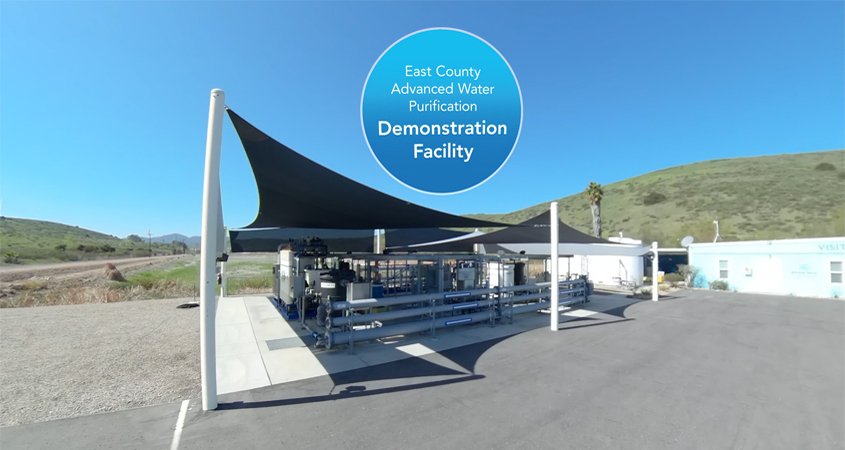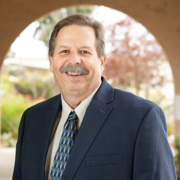Virtual Reality Video Tour for East County Water Project
A new 360-degree virtual reality video tour takes viewers through the planned East County Advanced Water Purification facilities. Participants are immersed in a guided tour of water facilities, where they can control their view by moving their computer mouse or smartphones to any direction in the video they want to see.
Viewers with a virtual reality headset for smartphones can take engagement one step further by stepping into the video. Locations visited in the virtual reality video tour include the Ray Stoyer Water Recycling Facility and the East County AWP Demonstration Facility in Santee, and Lake Jennings in Lakeside.
“Bringing this fun, easy to understand, and immersive tour to East County’s water and wastewater customers is an important and unique educational resource,” said Kyle Swanson, East County AWP director. “Prior to the COVID-19 pandemic, we averaged more than 1,000 people annually touring our facility, many of whom were eager students wanting to learn about this important water resource. This virtual tour helps to refill the learning need and will also be helpful while the East County AWP progresses towards the construction phase.”
Residents can participate in a guided virtual reality tour with a presentation and the opportunity to ask questions at 10 a.m., Tuesday, October 26. Sign up to reserve your place on the program’s Tours webpage.
Program representatives will also schedule opportunities for community groups, schools, and scouts to view the video using virtual reality goggles.
Creating a new sustainable drinking water supply

The East County AWP is a collaborative partnership between the Padre Dam Municipal Water District, Helix Water District, the County of San Diego, and the City of El Cajon. It will use sophisticated technology to provide 30% of current drinking water demands for East County residents. Photo: East County AWP
The East County AWP is a collaborative partnership between the Padre Dam Municipal Water District, Helix Water District, the County of San Diego, and the City of El Cajon. It will create a new, local, and sustainable drinking water supply using sophisticated technology to provide 30% of current drinking water demands for East County residents when it is completed in 2025, as much as 11.5 million gallons per day.
Water purification process
The program will use four advanced water purification steps to produce water that is near distilled in quality. After the advanced water purification process, the purified water will be blended with water in Lake Jennings and treated again at the R.M. Levy Water Treatment Plant before being distributed into the drinking water supply. The project eliminates the need to send most of East County’s wastewater to the City of San Diego’s Point Loma Wastewater Treatment Plant, where it is treated and then discharged into the ocean.
The Padre Dam Municipal Water District currently imports 100% of its drinking water supply. It treats two million gallons per day at its water recycling facility for irrigation and non-potable uses.
(Editor’s note: The Padre Dam Municipal Water District, Helix Water District, and the City of El Cajon are three of the San Diego County Water Authority’s 24 member agencies that deliver water across the metropolitan San Diego region.)




